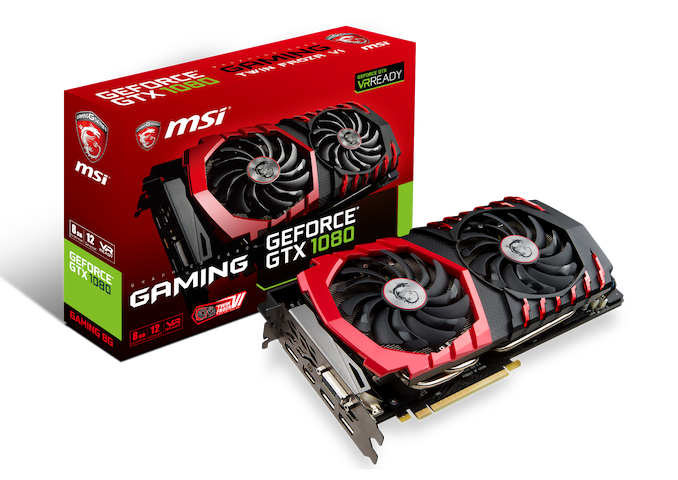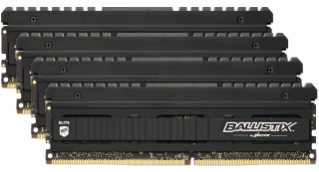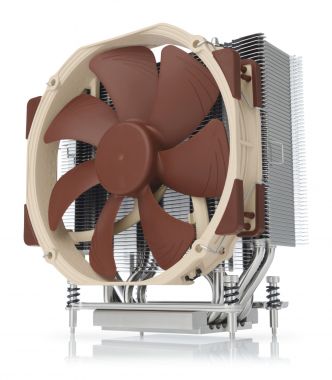Supermicro C9Z490-PGW Motherboard Review: Comet Lake with 32 CPU PCIe Lanes
by Gavin Bonshor on December 21, 2020 10:00 AM EST- Posted in
- Motherboards
- Intel
- Supermicro
- PLX
- Z490
- Comet Lake
- LGA1200
- C9Z490-PGW
Board Features
The Supermicro C9Z490-PGW is an ATX motherboard with a premium controller set, with the inclusion of a Broadcom PEX8747 PLX chip. The PLX chip allows for muxing which means the four full-length PCIe 3.0 slots which can operate at x16/x0/x16/x0 or x8/x8/x8/x8, with the 16 lanes from the CPU essentially doubled up (peak bandwidth is still limited to 16x upstream). It also includes a PCIe 3.0 x1 slot, as well as a pair of PCIe 3.0/SATA M.2 slots and four SATA ports with support for RAID 0, 1, 5, and 10 arrays. The C9Z490-PGW can officially accommodate DDR4-4000 UDIMM memory, with a maximum capacity of up to 128 GB supported across four memory slots. For cooling, the board includes six 4-pin headers, with two for CPU fans, three for chassis fans, and one dedicated to water pumps.
| Supermicro C9Z490-PGW ATX Motherboard | |||
| Warranty Period | 3 Years | ||
| Product Page | Link | ||
| Price | $395 | ||
| Size | ATX | ||
| CPU Interface | LGA1200 | ||
| Chipset | Intel Z490 | ||
| Memory Slots (DDR4) | Four DDR4 Supporting 128 GB Dual-Channel Up to DDR4-4000 |
||
| Video Outputs | 1 x HDMI 2.0a 1 x DisplayPort 1.4 |
||
| Network Connectivity | Aquantia AQC107 10 GbE Intel I129-V GbE Intel AX200 Wi-Fi 6 |
||
| Onboard Audio | Realtek ALC1220 | ||
| PCIe Slots for Graphics (from CPU) | 4 x PCIe 3.0 (x16/x0/x16/x0, x8/x8/x8/x8) (PLX) | ||
| PCIe Slots for Other (from PCH) | 1 x PCIe 3.0 x1 | ||
| Onboard SATA | Four, RAID 0/1/5/10 (Z490) | ||
| Onboard M.2 | 2 x PCIe 3.0 x4/SATA | ||
| USB 3.1 (20 Gbps) | 1 x USB Type-C (Rear panel) | ||
| USB 3.1 (10 Gbps) | 2 x USB Type-A (Rear panel) 1 x USB Type-C (Header) |
||
| USB 3.0 (5 Gbps) | 2 x USB Type-A (Rear panel) 2 x USB Type-A (One header) |
||
| USB 2.0 | 4 x USB Type-A (Two headers) | ||
| Power Connectors | 1 x 24-pin Motherboard 1 x 8-pin CPU |
||
| Fan Headers | 2 x 4-pin CPU 1 x Water Pump 3 x 4-pin Chassis |
||
| IO Panel | 2 x Antenna Ports (Intel AX201) 1 x HDMI 2.0a output 1 x DisplayPort 1.4 output 2 x USB 3.2 G2 Type-A 1 x USB 3.2 G2 Type-C 2 x USB 3.2 G1 Type-A 1 x RJ45 (Aquantia) 1 x RJ45 (Intel) 1 x Clear CMOS button 5 x 3.5 mm audio jacks (Realtek) 1 x S/PDIF Optical output (Realtek) |
||
The rear panel for a premium Z490 model is one of the most scarce for USB we have seen, with one USB 3.2 G2x2 Type-C, two USB 3.2 G2 Type-A, and two USB 3.2 G1 Type-A ports. Users can add another single USB 3.2 G2 Type-C port, two USB 3.2 G1 Type-A, and four USB 2.0 ports through the use of internal headers. It includes two video outputs consisting of a DisplayPort 1.4 and HDMI 2.0a output, with five 3.5 mm audio jacks and S/PDIF optical output powered by a Realtek ALC1220 HD audio codec. The C9Z490-PGW includes an Intel AX201 Wi-Fi 6 interface, which is the only difference between the slightly cheaper C9Z490-PG model. Wired networking includes a premium Aquantia AQC107 10 GbE controller, as well as an Intel I219-V Gigabit PHY.
Test Bed
As per our testing policy, we take a high-end CPU suitable for the motherboard that was released during the socket’s initial launch and equip the system with a suitable amount of memory running at the processor maximum supported frequency. This is also typically run at JEDEC subtimings where possible. It is noted that some users are not keen on this policy, stating that sometimes the maximum supported frequency is quite low, or faster memory is available at a similar price, or that the JEDEC speeds can be prohibitive for performance. While these comments make sense, ultimately very few users apply memory profiles (either XMP or other) as they require interaction with the BIOS, and most users will fall back on JEDEC supported speeds - this includes home users as well as industry who might want to shave off a cent or two from the cost or stay within the margins set by the manufacturer. Where possible, we will extend out testing to include faster memory modules either at the same time as the review or a later date.
| Test Setup | |||
| Processor | Intel Core i7-10700K, 125 W, $374 8 Cores, 16 Threads 3.8 GHz (5.1 GHz Turbo) |
||
| Motherboard | Supermicro C9Z490-PGW (BIOS 1.1) | ||
| Cooling | ID-Cooling Auraflow X 240mm AIO | ||
| Power Supply | Corsair HX850 80Plus Platinum 850 W | ||
| Memory | G.Skill TridentZ DDR4-2933 CL 14-14-14-34 2T (2 x 8 GB) | ||
| Video Card | MSI GTX 1080 (1178/1279 Boost) | ||
| Hard Drive | Crucial MX300 1TB | ||
| Case | Corsair Crystal 680X | ||
| Operating System | Windows 10 1909 inc. Spectre/Meltdown Patches | ||
Readers of our motherboard review section will have noted the trend in modern motherboards to implement a form of MultiCore Enhancement / Acceleration / Turbo (read our report here) on their motherboards. This does several things, including better benchmark results at stock settings (not entirely needed if overclocking is an end-user goal) at the expense of heat and temperature. It also gives, in essence, an automatic overclock which may be against what the user wants. Our testing methodology is ‘out-of-the-box’, with the latest public BIOS installed and XMP enabled, and thus subject to the whims of this feature. It is ultimately up to the motherboard manufacturer to take this risk – and manufacturers taking risks in the setup is something they do on every product (think C-state settings, USB priority, DPC Latency / monitoring priority, overriding memory sub-timings at JEDEC). Processor speed change is part of that risk, and ultimately if no overclocking is planned, some motherboards will affect how fast that shiny new processor goes and can be an important factor in the system build.


















24 Comments
View All Comments
:nudge> - Monday, December 21, 2020 - link
Too little too lakeorsoleads - Monday, December 28, 2020 - link
Great info. This will be great for my new set up. Will be adding to my list to order next week. Thanks a bunch. Regards - http://www.google.comDuncan Macdonald - Monday, December 21, 2020 - link
Or with Threadripper you can have 64 PCIe 4.0 lanes direct from the CPU - no switch required,The total bandwidth on the Supermicro is only that of 16 PCIe 3.0 lanes - the switch does not magically add bandwidth. The bandwidth on Threadripper 3rd gen (3970x etc) is eight times the bandwidth of the Intel CPU (a PCIe 4.0 lane has twice the bandwidth of a PCIe 3.0 lane).
Even the latest Ryzen chips have more bandwidth due to having PCIe 4.0 lanes instead of PCIe 3.0 lanes.
The board is probably on special offer to clear out this deadweight item.
The only good reason for buying it is to replace a broken motherboard.
Jorgp2 - Monday, December 21, 2020 - link
lol the cheapest TR and motherboard combo is like $2000Operandi - Monday, December 21, 2020 - link
Yeah, this particular board is potintless given the platform. Aside from that Supermicro should really lean into what they do best and thats build solid boards aimed at professionals. Sure target the DIY enthusiast but drop the gamer slogans, and marketing, "play harder" ughhh.... just stop.lmcd - Monday, December 21, 2020 - link
The point is specifically the platform. Wouldn't this be one of the only boards capable of 2-card SLI with 3090s (not that such a thing is performant) without a NUMA-required CPU?JimmyZeng - Tuesday, December 22, 2020 - link
Then you'll notice 2 slot 3090s are hard to find.edzieba - Tuesday, December 22, 2020 - link
The x16 slots are 4 slots apart.Jorgp2 - Tuesday, December 22, 2020 - link
Any GPU is single slot if you stick a water block on it.CheapSushi - Wednesday, December 23, 2020 - link
No, shut up. It's great that SuperMicro is making these and it is an option. Why don't YOU focus on other products.